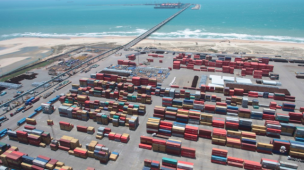Tempo de leitura: 3 minutos
For investors who are interested in doing business in ASEAN, you should know that ASEAN countries are constantly adjusting to the shifting global economy such as volatile commodity prices, slow growth in industrial economies. Therefore, the countries have also been seeking new strategies to drive economic development with a focus on providing greater public services, building infrastructure, and creating a more friendly business environment to appeal to investors.
However, most ASEAN countries have recently returned to special economic zones (SEZs) concept as their core development strategy in order to promote foreign investments. Since the establishment of ASEAN Economic Community, SEZs have risen to its prominence and it is now a potent tool to bring in more investors who look for diversification when doing business in ASEAN, epsecially after the recent US-China trade war. SEZs include technology parks, industrial parks, innovation areas and special export processing zones.
Investors who seek to reap the benefits of SEZs must first gain the fundamental knowledge before getting themselves involved in SEZ investments. You should understand the profile of SEZs in each country, then conduct detailed comparison analysis and finally visit the sites. In this article of Cekindo, we provide you with information regarding the thriving special economic zones in ASEAN countries.
Philippines
There are 12 SEZs, 22 specific agri-business zones and 300 declared economic zones across the Philippines. These economic zones are categorised into tourism, manufacturing, medical tourism parks and digital parks. Currently, the biggest investment promotion agency (IPA) is the Philippine Economic Zone Authority (PEZA) among the seven main IPAs in the country.
In the new law CITIRA, it is possible that IPAs have to follow rules enforced by CITIRA and will not be permitted to release their own incentives. Therefore, investors who plan to set up an IPA in the Philippines shall keep yourselves updated with the latest CITIRA development.
Thailand
Thailand has 10 SEZs at its borders with Malaysia, Myanmar, Cambodia and Laos since 2015, the total investments in these SEZs are recorded at US$23 billion. These SEZs has increased the border trades among these mentioned neighbouring countries with Thai exports valued at US$32 billion in 2018.
Thirteen (13) sectors are prioritized for development by the Thai government including textile and garment manufacturing, agro-industry, and engines and vehicle parts manufacturing. SEZs for defense technology industry will also be developed by the government but this initiative is still unclear at the moment.
Various incentives such as corporate income tax (CIT) exemption and CIT reduction are provided to investors setting up businesses in SEZs.
Vietnam
The latest development zone policy of Vietnam is expanded to consist of 18 coastal economic zones and 325 industrial parks supported by states. These Vietnamese economic zones give incentives ranging from low personal income tax to even free tariff.
The issuance of Special Zone Act has been delayed due to the government’s intention to create another three new SEZs in Khanh Hoa, Phu Quoc and Quang Ninh.
In order to compete with South China for foreign investments, the Vietnamese government may build more export-processing facilities and SEZs along the country’s eastern seaboard.
Indonesia
Currently, Indonesia has 11 SEZs across the country with investment opportunities available in agriculture, manufacturing, tourism and natural resources. In 2019, three SEZs were created and another seven are in the 2020 development phase. These newly launched SEZs aim to bring in at least US$50 billion over the next ten years. The total investments SEZs of Indonesia have achieved US$6 billion up until October 2019.
To counteract the possible negative effect brought by US-China Trade War, the Indonesian government plans to relax the tax holidays rules on facilities constructions on SEZs, as well as to provide more tax incentives.
Cambodia
There are 31 SEZs in Cambodia. A variety of tax incentives are offered in these SEZs for businesses including 100% CIT exemption, and export and import duties exemption. The first giant investor in Cambodian SEZ was Coca-cola, and then followed by other big players such as Timberland, Puma, Apple, and IBM.






Os comentários foram encerrados, mas trackbacks e pingbacks estão abertos.